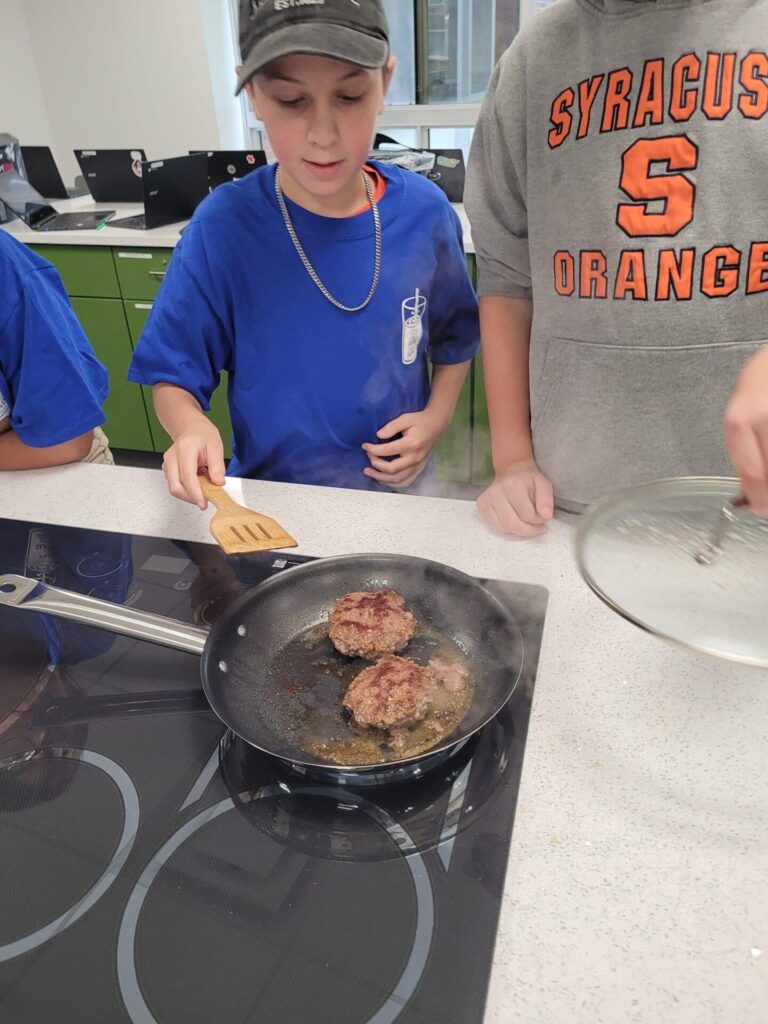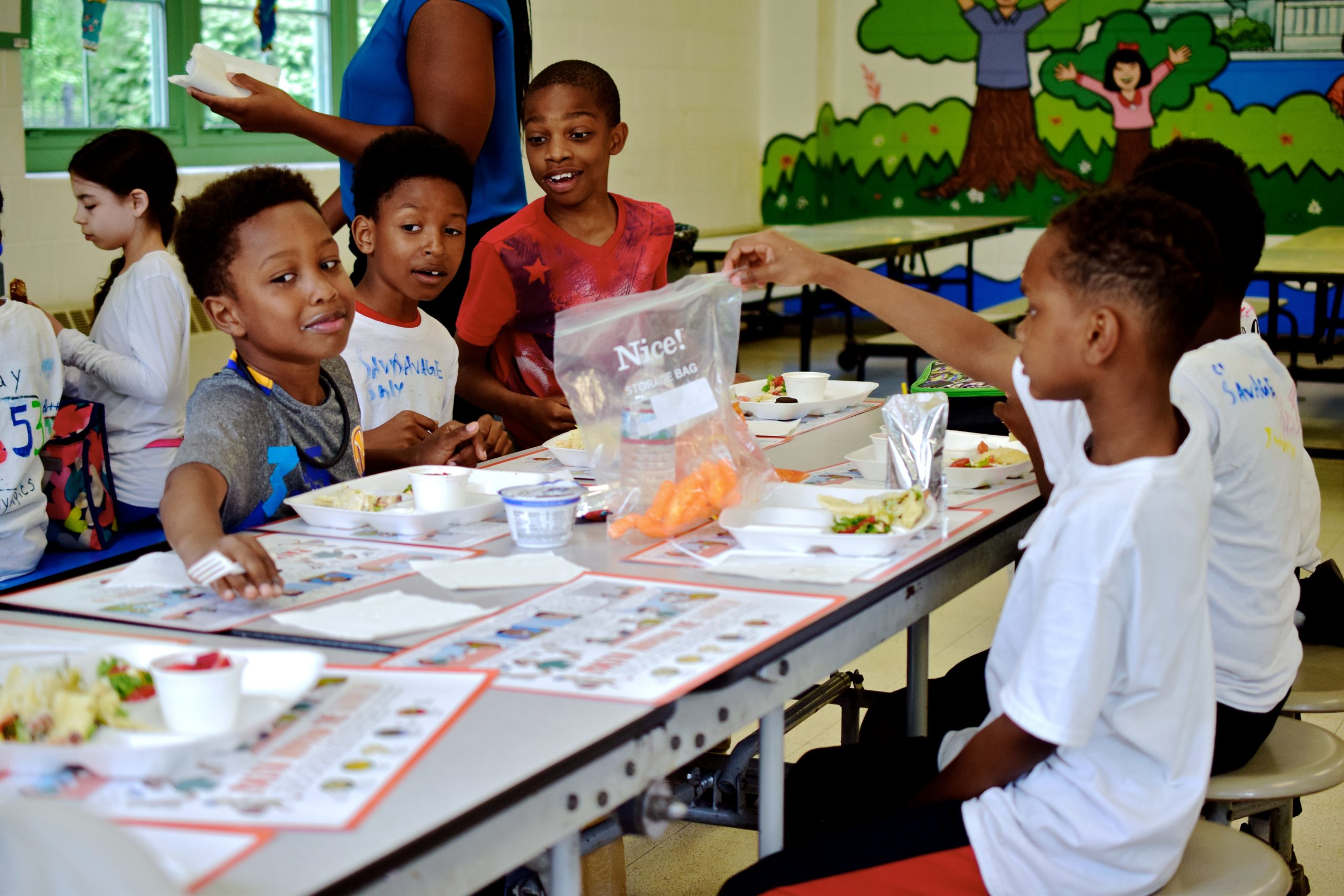“Food behaviors are influenced by external and internal factors” is Food Education Standard (FES) 4. Students who demonstrate understanding can: identify both external and internal factors and determine which factors are most influential in the food behaviors they embody in their everyday lives.
This Standard Means
- There are environmental, social, and emotional factors that influence how we learned, developed, and practice our food behaviors.
- People can be influenced to try or to avoid trying certain foods.
- It’s important to be aware of these potential influences and then do our best to make our own decisions about which foods to try.
- By identifying internal and external factors that influence food choices, we can think critically about our own individual food behaviors.
- Students who demonstrate understanding can identify both external and internal factors, and know which factors are most influential in their personal food decisions.
FES 4 In Action

“One [academic] skill that 6th graders have to have is the ability to make a claim and then support it with evidence,” explains 6th grade teacher and Fellowship Alumni Network member Monica Chamberlain. This skill comes up in all of their core classes and it is something that can be difficult to master. This year, to begin our work with claims [and evidence], we did a cooking experiment with grain fed vs. grass fed beef.”
Students in this class gathered data to support their claim of either grass-fed or grain-fed beef being the better option. This lesson helped them learn this important persuasive skill while also learning about food systems and cooking skills!
How to Bring FES 4 to Your Students
Try these examples of real-world community experiences with your students aged K-12 to help them understand the importance of FES 4 in their daily lives!
- Create a poster for one nutrient-dense food, inviting people to try it.
- Arrange a field trip to a grocery store, bodega, or food pantry to learn about product placement. Alternatively, invite a related professional for an interview discussion around these topics.
- Compare 1980s food public service announcements or PSA’s (e.g. SchoolHouse Rock) with modern wellness content, and create a video highlighting nutrient-dense foods, analyzing the differences and similarities in their marketing strategies.
- Arrange a field trip or virtual visit to a food advertising/marketing agency to learn about how food ads are developed and placed on television, radio, social media and/or billboards.
- Visit a food processing factory to observe branding, packaging, and better understand mass production processes.
- Analyze a sampling of food advertisements and evaluate messaging.
- Interview local, state, or national policymakers about their role in shaping food behaviors.
- Start a single-issue local campaign to critique a government policy in order to improve food behaviors.
- After analyzing media messages, design an ad campaign to improve food behaviors.
- Provide age-appropriate, culturally and community sensitive ways for students to reflect on internal factors that influence food choices.
Grade Specific Competencies
- I can name a food I like to eat.
- I can name a food I don’t like to eat.
Play-Based Activities
- Dramatic play: Set up an area for playing family, incorporate “family meals”
- Create art featuring student names combined with foods they like
- Discuss food together in the cafeteria
- Share feelings/opinions about the different foods offered in school lunch
- Make the school cafeteria in the block area
- Describe, classify, or rate different foods at snack time
- Vote and chart favorite fruits, favorite vegetables, etc.
- Encourage family and cultural shares/connections with food
- Use your morning message to ask questions about food preferences
- Incorporate games, songs, and chants about food
- Bake or cook something as a class (muffins, salad, smoothies!)
- Encourage sorting of dramatic play foods:
- Foods I like/foods I don’t like
- Foods I have tried/foods I haven’t tried
Grade-Specific Competencies
- I can identify language and images associated with manufactured food.
- I want to know how external factors can influence my eating habits.
- I can talk about some internal factors that affect or impact my food choices.
Grade-Specific Competencies
- I can talk about the values, emotions, personal beliefs, and feelings that influence my eating habits.
- I want to know how physical and perceived hunger can influence my food decisions.
- I can identify ways my school lunch program can influence the development of nutritious and responsible food choices.
Grade-Specific Competencies
- I want to know about how the food industry can influence food behaviors through media, packaging, and portion sizes.
- I can explain how nutritional needs (e.g. greater-than-average caloric count), biology (e.g. allergies, sleep quantity and quality) and agency (e.g. acting upon taste preferences) may influence relationships with food.
- I understand that socio-economics, geographic location, global markets, and media shape food behaviors.
Grade-Specific Competencies
- I want to know more about the ways in which social media messages can influence food behaviors.
- I can talk about ways that government policies (e.g. farm subsidies, trade agreements, MyPlate and other nutritional recommendations) can impact food behaviors.
- I want to know more about how peer relationships influence food behaviors.
- I can talk about how environmental and human disruptions may impact food behaviors.

